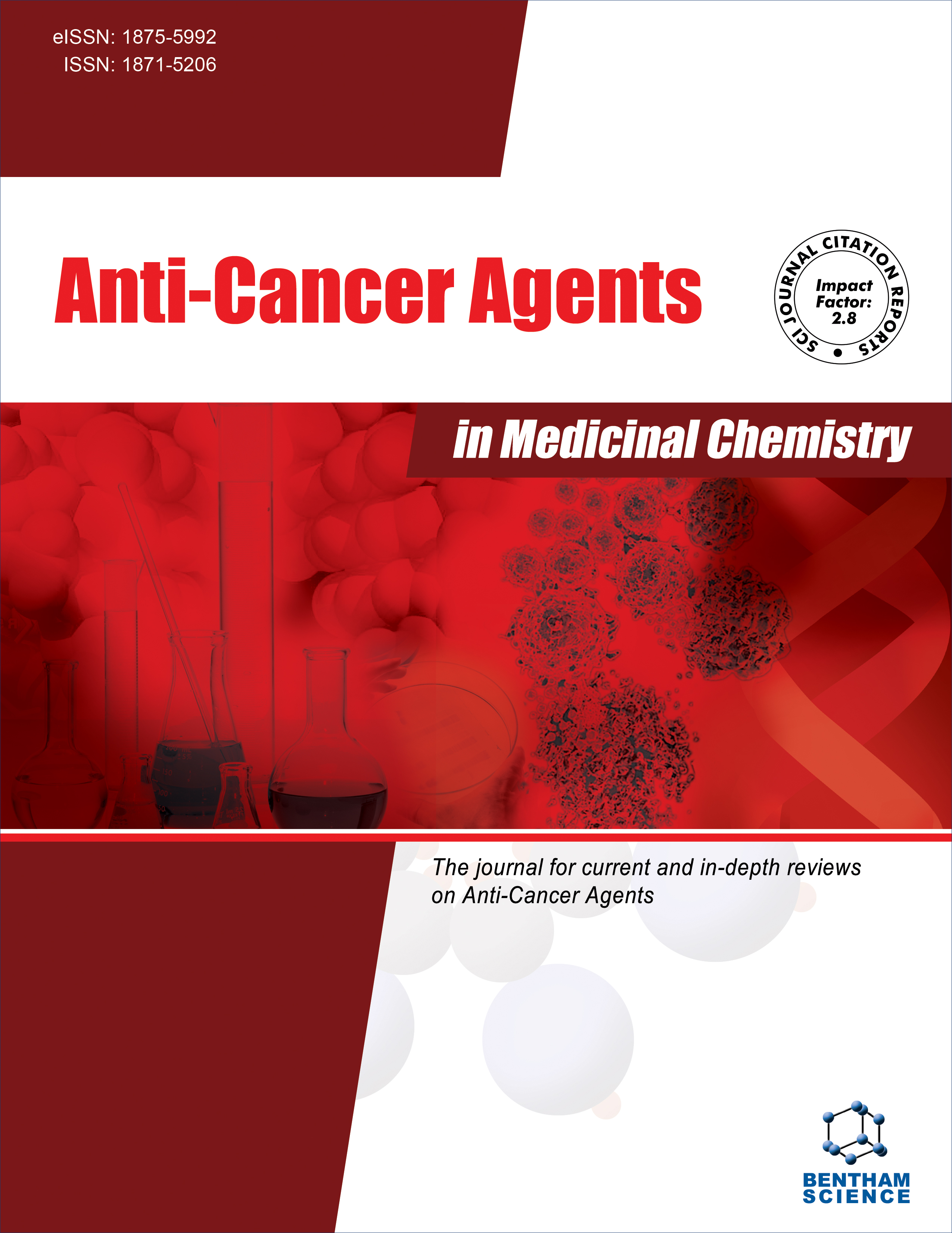-
oa Tabersonine Induces the Apoptosis of Human Hepatocellular Carcinoma In vitro and In vivo
- Source: Anti-Cancer Agents in Medicinal Chemistry (Formerly Current Medicinal Chemistry - Anti-Cancer Agents), Volume 24, Issue 10, Jun 2024, p. 764 - 772
-
- 01 Jun 2024
Abstract
Background: Tabersonine, a natural indole alkaloid derived from Apocynaceae plants, exhibits antiinflammatory and acetylcholinesterase inhibitory activities, among other pharmacological effects. However, its anti-tumor properties and the underlying molecular mechanisms remain underexplored. Objective: The present study aims to investigate the anti-tumor effects of tabersonine and its mechanisms in inducing apoptosis in hepatocellular carcinoma. Methods: The inhibitory effects of tabersonine on the viability and proliferation of liver cancer cells were evaluated using MTT assay and colony formation assay. AO/EB, Hoechst, and Annexin V-FITC/ PI staining techniques were employed to observe cell damage and apoptosis. JC-1 staining was used to detect changes in mitochondrial membrane potential. Western blot analysis was conducted to study the anti-tumor mechanism of tabersonine on liver cancer cells. Additionally, a xenograft model using mice hepatoma HepG2 cells was established to assess the anti-tumor potency of tabersonine in vivo. Results and Discussion: Our findings revealed that tabersonine significantly inhibited cell viability and proliferation, inducing apoptosis in liver cancer cells. Treatment with tabersonine inhibited Akt phosphorylation, reduced mitochondrial membrane potential, promoted cytochrome c release from mitochondria to the cytoplasm, and increased the ratio of Bax to Bcl-2. These findings suggested that tabersonine induces apoptosis in liver cancer cells through the mitochondrial pathway. Furthermore, tabersonine treatment activated the death receptor pathway of apoptosis. In vivo studies demonstrated that tabersonine significantly inhibited xenograft tumor growth. Conclusion: Our study is the first to demonstrate that tabersonine induces apoptosis in HepG2 cells through both mitochondrial and death receptor apoptotic pathways, suggesting its potential as a therapeutic agent candidate for hepatic cancer.


